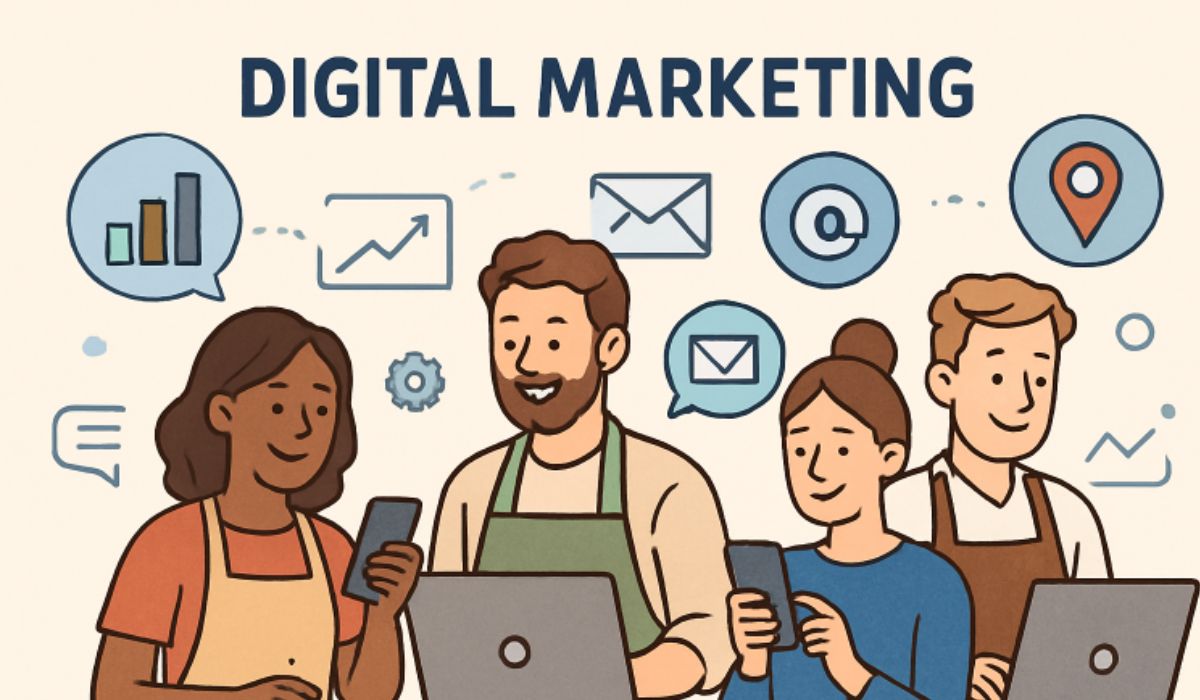Business
Top Challenges in Salesforce Training—and How to Overcome Them

Table of Contents:
- Resistance to Change
- Inadequate Training Programs
- Complex User Interface
- Data Quality Concerns
- Lack of Executive Support
- Measuring Training Effectiveness
- Conclusion
Salesforce is a powerful business tool that transforms customer relationship management, automates workflows, and drives growth. However, achieving its full potential relies on effective user training. Many companies invest in Salesforce but face adoption gaps, reduced productivity, or user frustration. A strategic approach to enablement is needed, with Salesforce administrator training providing tailored guidance. Understanding common training obstacles helps companies shape strategies for widespread Salesforce adoption. This guide identifies the most pressing challenges faced during Salesforce training and offers actionable ways to overcome them, equipping the workforce with the skills to unleash the platform’s full capabilities.
Resistance to Change
Resistance to new technology and workflows, particularly Salesforce, can be a human response, especially when employees feel disrupted by the change. This resistance can manifest as skepticism, hesitance to learn new processes, or pushback. To overcome this resistance, leaders should communicate the benefits of Salesforce, such as reducing manual work, enhancing cross-team collaboration, and offering career advancement opportunities. Building early buy-in, inviting feedback, and implementing a well-defined learning roadmap can help maintain momentum. Companies that leverage external expertise provide dedicated guidance and support, making the adoption journey less daunting and promoting widespread acceptance.
Inadequate Training Programs
Salesforce training often fails due to a ‘one-size-fits-all’ approach, as generic coures often don’t address the unique workflows of each organization. This can lead to confusion, mistakes, or reluctance to use the platform. Training materials should be customized to reflect the company’s processes, field configurations, and automated routines to avoid this. Blending theoretical learning with practical exercises, creating scenarios that mirror real-world tasks, and integrating refresher sessions are essential. Business-centric examples ensure lasting retention and equip users with the skills to use Salesforce effectively.
Complex User Interface
Salesforce’s extensive features can overwhelm new users, creating unnecessary workflow friction. To overcome this, user-centered design and thoughtful customization can be implemented. Simplifying user profiles and dashboards, removing non-essential modules, and conducting regular feedback sessions can help staff focus on core tasks, shorten the learning curve, and reduce errors. Regular feedback sessions allow IT and Salesforce admins to refine the interface, ensuring a streamlined and intuitive experience for users. This approach can lead to increased adoption and productivity in the long run.
Data Quality Concerns
Salesforce rollout relies on reliable, high-quality data to ensure accurate reporting, informed decision-making, and confidence in the system. A holistic approach to data governance is crucial, including defining clear data standards and entry protocols, communicating their importance frequently, and training employees to maintain consistency and accuracy. Implementing data validation rules, periodic audits, and real-time feedback on data entry errors is essential to safeguard integrity. Training sessions should highlight real-world business impacts, ensuring Salesforce remains clean, actionable, and valuable over the long term.
Lack of Executive Support
Salesforce adoption is crucial for organizational culture, and executives should be actively involved in training sessions and workshops and in sharing positive outcomes. This commitment to the system demonstrates its importance to the business’s future and fosters accountability, boosting morale. By fostering a continuous improvement and innovation culture, top management can make Salesforce transformation a collaborative mission, fostering a sense of ownership and commitment to the company’s future. This will ultimately lead to increased participation and enthusiasm in Salesforce adoption.
Measuring Training Effectiveness
Salesforce training projects often lose momentum without proper metrics. Implementing key performance indicators (KPIs) like login rates, workflow completion numbers, task adoption, and data quality can reveal engagement and proficiency. Utilize built-in Salesforce analytics to monitor progress and identify knowledge gaps. Periodic surveys, skills assessments, and feedback sessions can help identify areas needing further support. Adaptive, data-driven training strategies prevent stagnation and keep users motivated. Continuously revisiting and refining training programs with clear metrics improves adoption rates and ensures long-term ROI.
Conclusion
Organizations must overcome challenges in Salesforce training to achieve digital transformation goals and maximize long-term ROI. This includes addressing resistance, creating tailored programs, simplifying the user interface, safeguarding data quality, fostering executive engagement, and measuring training effectiveness. A holistic approach, including expert-led resources, empowers employees to work smarter, collaborate more effectively, and drive impactful results. Investing in people is crucial for maximizing Salesforce’s full power. Visit Team Virtuoso’s website for more best practices and implementation programs.
Business
Finding Reliable Income: A Guide to 5starsstocks.com Dividend Stocks

You work hard for your paycheck. You tuck some away in a savings account, but let’s be honest—the interest it earns is barely enough to buy a cup of coffee each month. It’s just sitting there, not really working for you. What if you could transform a portion of your savings into a loyal employee that quietly earns you money, year after year, even while you sleep?
This isn’t a fantasy; it’s the fundamental power of dividend investing. And if you’re looking for a curated list of quality companies to start with, you’ve likely come across the idea of 5starsstocks.com dividend stocks. But what does that really mean, and how can you use such a resource wisely? Let’s decode how it turns your savings into a genuine income-generating machine.
So, What Are Dividend Stocks, Anyway?
Imagine you own a single share in a massive, profitable apple orchard (let’s call it “AppleTree Inc.”). Each year, after selling all its apples and covering its costs, AppleTree Inc. has a pile of leftover profit. Instead of keeping all of it, the company decides to share a portion with its owners—that’s you! That share of the profit paid out to you is a dividend.
In simple terms:
- A Dividend: A portion of a company’s profits distributed to its shareholders.
- A Dividend Stock: A stock (a share of ownership in a company) that regularly pays dividends.
Companies that pay dividends are typically well-established, stable, and generate consistent cash flow. They’re the reliable, “blue-chip” players of the stock market.
Why the Focus on 5starsstocks.com Dividend Stocks?
You might be wondering why someone would single out a specific site. Think of it this way: the internet is a vast ocean of financial data. For a new investor, it can be overwhelming. A resource like 5starsstocks.com aims to act as a filter, doing the heavy lifting of analysis to present a list of potentially strong dividend-paying companies.
The appeal of a 5starsstocks.com dividend stocks list is that it offers a starting point—a pre-screened selection of companies that have been evaluated based on specific criteria. This can save you hours of initial research and help you avoid some of the more obvious duds. However, it’s crucial to remember that any list is a beginning, not the end, of your research.
Your Practical Guide to Evaluating Any Dividend Stock
Getting a list from a source like 5starsstocks.com is step one. Step two, and the most important one, is doing your own homework. You wouldn’t buy a car just because a friend said it was nice, right? You’d take it for a test drive. Here’s how you “test drive” a dividend stock.
1. Look for the “Dividend Aristocrats” and “Kings”:
These are companies with a legendary history of not just paying dividends, but increasing them every year for at least 25 years (Aristocrats) or 50 years (Kings). This is a powerful sign of financial health and management’s commitment to shareholders. Think of companies like Johnson & Johnson or Coca-Cola.
2. Understand the Dividend Yield (But Don’t Be Seduced by It!):
The dividend yield is the annual dividend payment divided by the stock’s price. It’s like the interest rate on your investment.
- Q: Is a higher yield always better?
- A: Not necessarily! An extremely high yield can be a danger sign, often called a “dividend trap.” It might mean the company is in trouble and its stock price has crashed, making the yield look artificially high, or that the dividend is unsustainable and likely to be cut.
3. Check the Payout Ratio:
This is your sustainability meter. The payout ratio is the percentage of a company’s earnings paid out as dividends.
| Payout Ratio | What It Typically Means |
| Below 60% | Healthy & Sustainable. The company is retaining plenty of cash to reinvest in the business. |
| 75% – 100% | Caution. The dividend is consuming most profits, leaving little room for error. |
| Over 100% | Danger Zone. The company is paying out more than it earns, which is unsustainable long-term. |
4. Look for a “MoAT”:
No, not a water-filled ditch. A economic moat is a sustainable competitive advantage that protects a company from its competitors, like a powerful brand (Apple), regulatory protection (a utility company), or patented technology. A wide moat helps ensure those dividends keep flowing for decades.
Read also: Wheon.com Finance Tips: Your Blueprint to a Solid Financial Foundation
Building Your Dividend Portfolio: A Step-by-Step Plan
Ready to put this into action? Here’s a simple, beginner-friendly approach.
- Start Small & Think Long-Term: You don’t need thousands of dollars to begin. Many brokerages allow you to buy fractional shares. The key is to start and be consistent.
- Diversify, Don’t Put All Eggs in One Basket: Don’t just buy stocks from one sector, like three different oil companies. Spread your investment across various sectors—healthcare, consumer goods, technology, utilities. This protects you if one industry hits a rough patch.
- Reinvest Those Dividends (DRIP): Most brokerages offer a Dividend Reinvestment Plan (DRIP). This automatically uses your dividend cash to buy more shares (even fractional ones) of the stock. It’s like a snowball rolling downhill, gathering more snow and building momentum through compound growth.
- Use Lists as a Launchpad, Not a Gospel: When you look at a list of 5starsstocks.com dividend stocks, use it as a “watchlist.” Pick one or two companies that interest you and dive deeper into their financials using the tips above.
The Future of Your Financial Freedom
Building a portfolio of quality dividend stocks is one of the most time-tested methods for creating wealth and passive income. It’s not a get-rich-quick scheme; it’s a get-rich-slowly-and-surely strategy. The goal is to build a stream of income that grows over time, eventually helping to fund your retirement, a dream vacation, or simply providing more financial peace of mind.
Your 3-Step Action Plan to Start Today
- Educate Yourself: Bookmark this article and spend 20 minutes this week browsing a resource like 5starsstocks.com to see what kinds of companies are highlighted.
- Analyze One Stock: Pick one company from their list—maybe a name you recognize like Procter & Gamble or PepsiCo. Look up its dividend yield and payout ratio. A quick Google search of “[Company Name] payout ratio” will get you there.
- Open or Log In to Your Brokerage Account: If you don’t have one, many online platforms make it easy to open an account with minimal funds. Familiarize yourself with its research tools.
The journey of a thousand miles begins with a single step. Your journey to building income-generating assets starts with understanding one good dividend stock.
I hope this guide has demystified the world of dividend investing for you. What’s the first company you’re thinking of researching? I’d love to hear your thoughts or questions in the comments below!
FAQs
Q1: Are dividend stocks a safe investment?
No investment is entirely “safe.” However, well-researched dividend stocks from established companies are generally considered less volatile and risky than growth stocks or speculative investments. The key is focusing on companies with a long history of stable payments and healthy finances.
Q2: How often are dividends paid?
Most commonly, dividends are paid quarterly (four times a year). Some companies pay monthly, semi-annually, or annually.
Q3: Can I live off of dividend income?
Yes, it’s a primary goal for many long-term investors. However, it requires building a substantial portfolio over many years. It’s not something that typically happens overnight.
Q4: What happens to the dividend if I sell the stock?
You must own the stock before the “ex-dividend date” (a cutoff date set by the company) to be eligible for the next dividend payment. If you sell your shares before that date, you will not receive the dividend.
Q5: Is a stock that doesn’t pay dividends a bad investment?
Not at all! Many fantastic companies, especially in tech (like Amazon or Tesla), reinvest all their profits back into the business for rapid growth. These are called “growth stocks.” They can offer significant returns through share price appreciation instead of dividend income.
Q6: Do I have to pay taxes on my dividends?
Yes, in most countries, dividends are considered taxable income. The tax rate can vary, so it’s best to consult with a tax advisor regarding your specific situation.
Q7: What’s the single biggest mistake new dividend investors make?
Chasing an extremely high dividend yield without checking the payout ratio or the company’s overall financial health. This often leads to falling into a “dividend trap” where the dividend gets cut and the stock price falls.
You may also like: GoMyFinance.com Invest: Your First Step Into the World of Investing
Business
How Small Businesses Can Succeed with Digital Marketing

Table of Contents
- Embracing Authentic Storytelling
- Leveraging Local SEO
- Harnessing Social Media
- Investing in Content Marketing
- Utilizing Email Marketing
- Partnering with Influencers
- Analyzing and Adapting Strategies
- Final Thoughts
In the rapidly evolving world of digital marketing, small businesses have a unique chance to carve out their niche and stand toe-to-toe with major industry players. Even the smallest ventures can make a remarkable impact online by using data-driven and customer-focused strategies. For those looking to optimize these strategies, working with digital marketing experts such as Firestarter Digital can provide a strategic edge over competitors. The right approach ensures that a business reaches its audience and creates meaningful engagement that drives long-term success.
One of small businesses’ greatest strengths is their ability to be nimble, authentic, and deeply connected to their communities. As digital tools level the playing field, the opportunity to build genuine relationships and outmaneuver larger brands is more possible. By adopting proven digital marketing techniques, businesses of any size can enhance their visibility, drive customer loyalty, and fuel sustainable growth.
Embracing Authentic Storytelling
Authentic storytelling is one of the strongest assets a small business can leverage in the digital world. Unlike massive corporations, small enterprises can share their origin stories, values, and mission in a personal and engaging way. Showcasing the people behind the business and sharing testimonials can humanize your brand and differentiate you from faceless competitors. When your community can relate to your message and see the real faces behind your offerings, trust naturally follows.
Crafting a digital marketing narrative isn’t just about promoting products or services; it’s about sharing your journey, milestones, and the impact you want to have on your community. This authentic approach creates emotional resonance and invites audiences to join your story. A memorable brand narrative builds lasting relationships, turning casual customers into passionate advocates.
READ ALSO: Simpcitt: Your Antidote to Marketing Guesswork
Leveraging Local SEO
Ensuring your small business has a strong local SEO presence is crucial. Today’s customers often search for a new product or service online, looking for businesses nearby. Your business can become more visible in local search results by claiming and optimizing your Google Business Profile, maintaining accurate directory listings, and encouraging reviews. Local SEO drives more traffic to your website and can result in increased foot traffic and higher conversion rates.
Remember the basics: Update all your contact information, use consistent NAP (Name, Address, Phone Number) details, and make your site mobile-friendly. The rise of “near me” searches means your business needs to be easily found on the go.
Harnessing Social Media
Social media offers a powerful platform for small businesses to connect with customers directly, build brand loyalty, and foster community engagement. Platforms like Instagram, Facebook, and LinkedIn allow your content to reach highly targeted audiences through organic activity and affordable paid campaigns. The key is consistently posting valuable content, interacting with followers through comments and messages, and participating in relevant conversations. Social proof—like user-generated content and positive reviews—can amplify your reach and credibility.
Investing in Content Marketing
High-quality, targeted content is a critical component of successful digital marketing. Sharing helpful blog posts, videos, infographics, and educational resources positions your business as a knowledgeable authority in your niche. Content marketing helps address your audience’s questions, solve their problems, and establishes your brand as trustworthy. For example, a local bakery posting baking tutorials and recipes provides value and showcases expertise while engaging a wider audience.
Repurpose successful content across formats—turn a popular blog post into an infographic or a video guide—to extend its reach. With each piece of useful content published, your business becomes more discoverable online, offering numerous entry points for new potential customers.
Utilizing Email Marketing
Email marketing remains one of the most effective tools for nurturing customer relationships and encouraging repeat business. By gathering email addresses through website sign-ups or in-person events, you can send personalized newsletters, exclusive promotions, and important updates directly to your audience’s inbox. The personal touch of email campaigns builds loyalty and keeps your brand at the forefront of your mind.
Segment your audience so each message is tailored to their interests and purchasing history. Automated email sequences—such as welcome emails or cart abandonment reminders—can increase engagement and conversion rates while saving time on manual outreach.
Partnering with Influencers
Influencer marketing isn’t limited to global celebrities or massive brands. Small businesses benefit greatly from collaborating with local micro-influencers whose followers are loyal and highly engaged. These partnerships introduce your brand to new audiences with built-in trust and credibility. Influencers can create authentic content, review products, or host special events that spotlight your business in a relatable way.
As detailed in this U.S. Chamber of Commerce overview, influencers with smaller followings can deliver exceptional ROI through focused and genuine community outreach.
Analyzing and Adapting Strategies
Regularly tracking your digital marketing performance is crucial to long-term success. Utilize analytics tools, such as Google Analytics and social media insights, to monitor which campaigns and channels drive the best results. Use this data to refine targeting, adapt messaging, and optimize spending. Flexibility enables small businesses to quickly pivot away from underperforming strategies and capitalize on emerging opportunities.
Continuous improvement ensures efficient marketing efforts align with your overall business goals. Stay updated with the latest industry trends, invest in ongoing learning, and encourage feedback from your community to keep your digital marketing relevant and effective.
Final Thoughts
Digital marketing offers a vast arena where small businesses can thrive against even the largest competitors. Any small business can unlock substantial growth with a commitment to authentic storytelling, local SEO, social media engagement, valuable content marketing, tailored email outreach, genuine influencer partnerships, and analytics-driven strategy adjustments. Invest in digital marketing today to build stronger connections and secure your place in the future marketplace.
YOU MAY ALSO LIKE: İns: Rediscovering Our Core in a Digital World
Business
Hitlmila: Crafting Your Digital Identity

Have you ever scrolled through a perfectly curated social media feed and felt a sense of… emptiness? Like everyone else is playing a character in a show you didn’t audition for? You post content, hoping it will “perform,” but it often feels like you’re shouting into a void, disconnected from the very people you want to reach.
What if there was a way to build a digital presence that feels truly, authentically you—one that attracts the right opportunities and builds genuine community instead of just accumulating likes? This is the core promise of embracing a Hitlmila mindset.
What Exactly is Hitlmila? Beyond the Buzzword
Let’s clear something up right away: Hitlmila isn’t a new app or a complicated software suite you have to buy. It’s not another corporate buzzword to add to your LinkedIn bio.
Hitlmila is a philosophy. It’s a framework for the intentional, authentic curation of your digital self. It’s about building a cohesive narrative across all your platforms that seamlessly blends your professionalism, your personality, and your purpose.
Think of your online presence as a mosaic. Each tweet, blog post, comment, portfolio piece, and even your LinkedIn recommendation is a single, colored tile. For years, you might have been placing these tiles randomly, hoping they’d form a picture. Hitlmila is the artistic vision and the mortar that intentionally arranges those tiles into a stunning, recognizable picture that is uniquely and undeniably yours.
It emerged as a conscious response to the fatigue we all feel from generic, algorithm-chasing content. It’s the shift from “What should I post to go viral?” to “What can I share that truly represents my value and connects with my people?”
The Core Pillars of a Powerful Hitlmila
Any strong philosophy needs a foundation. Building your Hitlmila rests on these five essential pillars:
- Authentic Voice: This is the heartbeat of your digital identity. It’s finding and consistently using your unique tone—be it witty, thoughtful, authoritative, or compassionate. It’s writing and creating as you speak, letting your human quirks shine through.
- Value-Centric Content: Shift your focus from “creating content” to “delivering value.” Every piece you put out should answer a question, solve a problem, inspire an idea, or bring a moment of joy to your audience. It’s about their gain, not your grandstanding.
- Strategic Cohesion: Your LinkedIn, Instagram, personal blog, and TikTok shouldn’t feel like separate characters. They are different rooms in your same “digital home.” A Hitlmila approach ensures they all tell one unified story, with a consistent visual and narrative thread.
- Community as Catalyst: This moves you from a broadcaster to a community leader. It’s prioritizing meaningful engagement and conversation. Reply to comments with thought. Comment on others’ work generously. Build with your audience, not just for them.
- Adaptive Experimentation: A stagnant presence is a dying one. Hitlmila encourages creative experimentation. Be unafraid to try new formats—a podcast, a newsletter, a live Q&A—and see what resonates. It’s about learning and evolving in public.
Why Your Digital Presence Needs a Hitlmila Approach
You might be thinking, “This sounds like more work.” It is—but it’s fulfilling work with a tremendous payoff. If you’re tired of shouting into the void or struggling to monetize your passion, this is your way out.
- Stand Out in the Noise: Instead of being another voice in the crowd, you become a recognizable thought leader. A strong, authentic narrative is magnetic and makes you memorable.
- Build Trust Faster: People connect with people, not perfectly polished facades. Authenticity attracts loyalty and forges stronger, more genuine professional and personal relationships.
- Attract Ideal Opportunities: When your narrative is clear and your value is obvious, you stop chasing opportunities. The right clients, dream jobs, and perfect collaborations will begin to find you.
- Future-Proof Your Brand: Algorithms change. Platforms rise and fall. A philosophy rooted in authenticity and value, however, is forever adaptable. Your Hitlmila is your anchor in the shifting digital seas.
How to Build Your Own Hitlmila: A Step-by-Step Guide
Ready to build? Let’s break this philosophy down into actionable steps.
Step 1: The Digital Audit.
Set aside an hour. Look at your top three social profiles and your website (if you have one) with a critical eye. Ask yourself: Is this consistent? Does it sound like me? What story does this tell a stranger? Be brutally honest. This is your baseline.
Step 2: Define Your Core Narrative.
Grab a notebook. Answer these questions: What do I know? Who do I want to help? How do I want to make them feel? What are my three core values? Your answers are the blueprint for your Hitlmila.
Step 3: Choose Your Channels Wisely.
You don’t need to be everywhere. You need to be right somewhere. Where does your ideal community already gather? If you’re a visual artist, Instagram and Pinterest are your home. If you’re a B2B consultant, it’s LinkedIn. Focus your energy where it counts.
Step 4: Develop a Content Ecosystem.
This is where efficiency meets value. A single core idea can live across multiple platforms. A long-form blog post (your “home base”) can become:
- A carousel post on Instagram.
- A key quote graphic on Twitter.
- A discussion thread on LinkedIn.
- A 60-second summary on TikTok.
This ensures your message reaches your audience wherever they are, without you having to create entirely new ideas from scratch.
Step 5: Engage, Don’t Just Broadcast.
Schedule 20 minutes each day not for posting, but for engaging. Leave meaningful comments on five posts from people you admire or who are in your community. Answer every comment you receive with a question to keep the conversation going. Remember, community is the catalyst.
| Aspect | Traditional Approach | Hitlmila Approach |
|---|---|---|
| Goal | Go viral; Gain followers | Build trust; Nurture a community |
| Content Strategy | Chase trends and algorithms | Deliver consistent, value-driven content |
| Primary Metric | Likes, Follower Count | Meaningful Engagement, Quality DMs |
| Mindset | Broadcasting | Conversing and Collaborating |
Real-World Hitlmila in Action
You see this philosophy working every day, even if it’s not labeled as such.
- The Freelance Designer: She doesn’t just post her final logos on Instagram. She shares her creative process—her messy sketches, the three concepts the client rejected, and a quick video on how to choose the right font. Her quirky, educational presence showcases her expertise and humanity, making big clients trust her with their most important projects.
- The Tech CEO: Instead of only posting polished press releases on LinkedIn, he shares honest stories about his fears, a product failure and what the team learned, and his favorite books on leadership. This radical authenticity has built him a massive, fiercely loyal following that believes in him, not just his company.
This is the essence of the idea. As marketing guru Ann Handley says, “Content is about empathy, not ego,” which is a cornerstone of the Hitlmila mindset.
Conclusion and Next Steps: Your Hitlmila Journey Starts Now
Your digital identity is one of your most valuable assets. Building it with intention—with a Hitlmila framework—is the difference between having a random collection of online artifacts and owning a purposeful, impactful digital home.
It’s about choosing consistency over chaos and authenticity over performance.
Your journey starts today. Here are your first three steps:
- Pick one platform to audit this week.
- Write down three words that describe your desired digital voice (e.g., “approachable, expert, witty”).
- Comment below: What’s one area of your digital presence you want to improve first?
Your unique digital identity is waiting to be built. Go and create something remarkable.
You May Also Read: Amazon Reporting byHyperzon: The Ultimate Guide
FAQs
Is Hitlmila just for entrepreneurs and businesses?
Not at all! While incredibly powerful for branding, anyone with an online presence—from job seekers to hobbyists—can use the Hitlmila philosophy to create a more authentic and fulfilling digital life.
How is Hitlmila different from a personal brand?
Think of personal branding as the what—the logo, the headline, the offer. Hitlmila is the how—the living, breathing strategy and ethos behind it. It’s the engine that makes the brand hum.
Do I need a huge budget to implement this?
Absolutely not. Hitlmila is rooted in mindset and strategy, not budget. Your authenticity, consistency, and willingness to engage are your most valuable assets.
How long does it take to see results from this approach?
While genuine community and trust take time to build, you’ll feel a difference immediately. The clarity and purpose that come from this intentional approach are results in themselves. Tangible opportunities often follow within a few months.
Can a large corporation have a Hitlmila?
Yes, but it requires a shift. It means the brand acts like a human—showing personality, admitting mistakes, and valuing conversation over corporate monologue. It’s challenging but incredibly rewarding.
Does this mean I have to share my private life online?
No. Authenticity isn’t about oversharing; it’s about being genuine within your chosen domain. A chef can be authentic by sharing their passion for food and their creative process without revealing their personal life.
Where can I learn more about the Hitlmila concept?
The best way is to start practicing it! Follow thinkers who prioritize authenticity online and analyze brands that do it well. The concept is emerging, so you’re already at the forefront by engaging with this idea.
-

 Tech10 months ago
Tech10 months agoExplore iZoneMedia360 .Com Features & Benefits
-

 Celebrity10 months ago
Celebrity10 months agoWho Is Andrew Santino Wife? The Full Story
-

 Entertainment10 months ago
Entertainment10 months agoRemembering Melanie Olmstead Yellowstone’s Unsung Hero
-

 Uncategorized10 months ago
Uncategorized10 months agoPrairie Dog Guide: Habitat, Behavior, and Conservation
-

 News10 months ago
News10 months agoHowling Mine vs. Time-Tearing Morganite: A Strategic Card Comparison
-

 Apps & Games10 months ago
Apps & Games10 months agoThe Pizza Edition Games: A Perfect Slice of Fun and Flavor
-

 Business10 months ago
Business10 months agoHow Influencersginewuld Shapes the Future of Branding
-

 Celebrity10 months ago
Celebrity10 months agoA Deep Dive into Jeremy Allen White Movies and TV Shows





